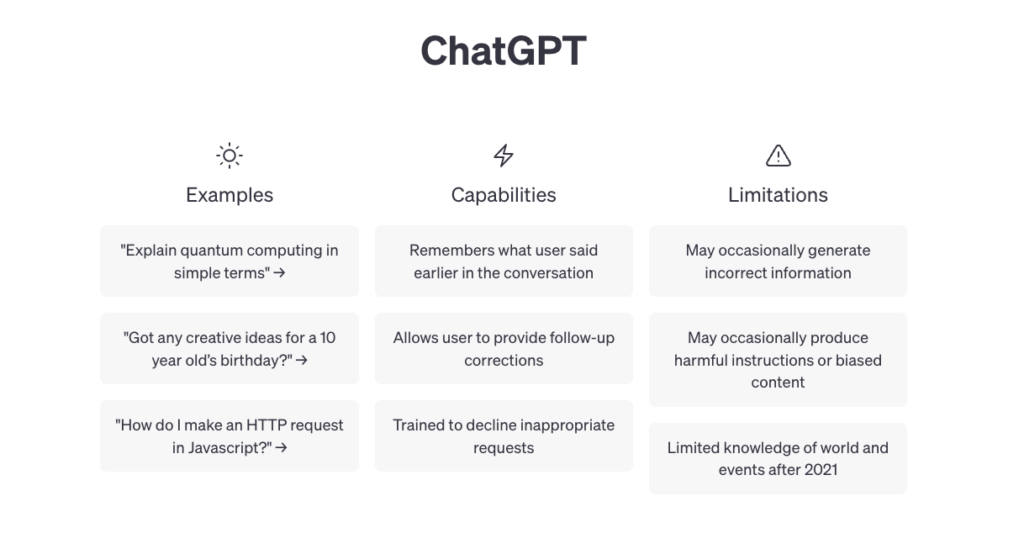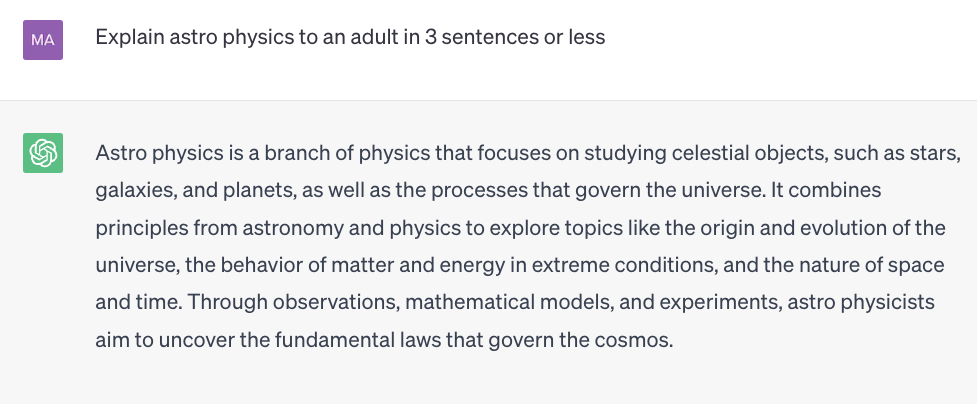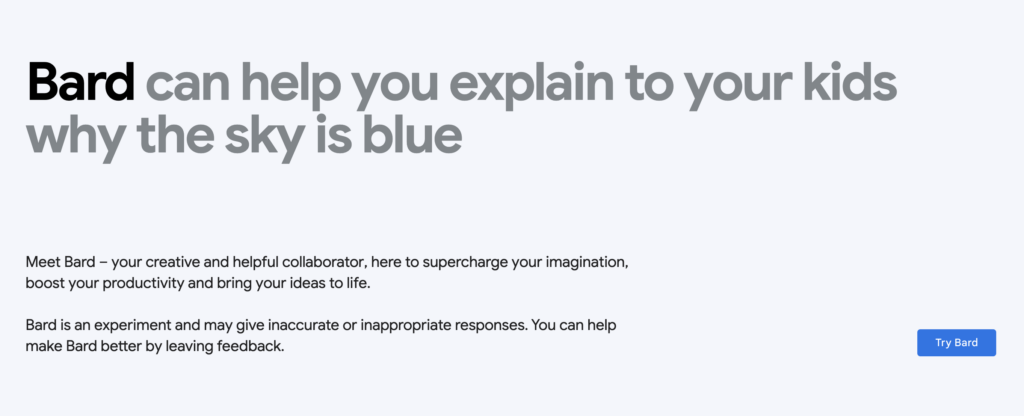Artificial intelligence or AI has been all over the news and our social feeds recently, and with its many intricacies, capabilities and limitations it can be a difficult concept to understand. So here is a brief intro to AI tools, with a focus on natural language processing tools powered by conversational AI. The type of AI you can have a conversation with!
So what is Artificial Intelligence? Simply put it is the display of human intelligence processes by machines or computers. The ability to perceive, synthesise and infer information or think, learn, and make decisions like humans. The AI tools mentioned below gather their information from large bodies of text and various online resources. They learn from this information to answer queries and formulate ideas. Instead of showing web results that match your query. AI gives people answers by looking through large sets of data and using a language learning model or LLM to create sentences that are similar to a human response.

ChatGPT
The first chatbot in our intro to AI is arguably the most well-known AI tool. ChatGPT, is a conversational AI, meaning you can input questions or requests and ChatGPT will reply in a conversational manner. ChatGPT’s learning and information is based on over 500GB of text-based data from the internet. However, ChatGPT was trained on data from 2021, so some responses may not be the most up-to-date.
Chat GPT is a really useful tool with a wide range of fun and exciting capabilities. Get creative input for a play you’re trying to write, use ChatGPT to plan and schedule tasks or events. Struggling with data analysis, input the raw data to ChatGPT and it will write a report for you. Change the style of output depending on how you phrase your prompt like the examples below.


As with any new technology ChatGPT has its flaws. The limitations caused by a 2021 cutoff for data render many topics off-limits especially those relating to current events. ChatGPT may also at times produce incorrect answers, depending on what data it is relying on. It can also be sensitive to the phrasing used during input, meaning different answers could be generated based on the wording of the question.

Bard
Google’s newly released Conversational AI, Bard was introduced in February and is powered by their latest dataset, Pathways Language Model or PaLM. Although still in its experimental phase, Bard has many of the same capabilities as ChatGPT. These include the ability to provide creative input, detailed responses and analysis of the input.
Unlike ChatGPT, Bard can draw information from the internet in real time and is not limited by older datasets. This opens up a whole new set of possibilities when inputting queries to Bard. Google is very clear in downplaying expectations for this experimental version. Even including a disclaimer when launching Bard for the first time.
Bard also allows access no matter what browser you use, meaning there is no need to download additional software or switch browsers. You will need to have a Google account as Bard is restricted to users 18 and over.

Bing Chat
Our final Conversational AI tool is the new Bing. This AI-powered search engine uses Open AI’s GPT-4 and feels like a conversational search engine. Although it is powered by GPT-4, Bing adds a layer on top of this AI model, incorporating search results from the internet. Meaning responses and data can be much more up-to-date, than those provided by ChatGPT.
Perhaps the coolest feature of the new Bing is the incorporated Image Creator. This powerful tool is a great intro to AI and helps you generate AI images with DALL-E (Open AI’s system that can create realistic images and art from a description in natural language). Opening up a whole new world to creators, art enthusiasts or those seeking some inspiration.
Using simple text input, Image Creator can produce images in various styles that previously would have required a professional artist or designer.
Like the other AI’s, Bing Chat and Image Creator rely on users to find and report flaws and recognise incorrect answers. It also has daily limits on the number of sessions per user and messages per conversation and requires users to be using the Microsoft Edge browser.
Conversational AI is an exciting, fascinating and powerful tool. And, we are only in the very early stages of AI’s development and integration into our lives. As AI continues to learn and become more powerful, the possibilities will continue to grow.